The Pros and Cons of Different Roofing Materials: Making an Informed Choice for Your Home
Choosing the right roofing material for your home is a significant decision. It not only affects the aesthetics but also plays a vital role in protecting your property from the elements. With a wide range of options available, it’s essential to understand the pros and cons of different roofing materials. In this blog post, we’ll explore various roofing materials and discuss their advantages and disadvantages to help you make an informed choice.
Asphalt Shingles
Asphalt shingles are the most popular type of roof due to their affordability and versatility. Approximately 80 percentof U.S. roofs use asphalt shingles. There are a variety of different types of asphalt shingles. The first and most common is going to be the 3-tab asphalt shingle.
3 Tab Asphalt Shingles
The 3-tab asphalt shingle is going to be the most affordable of the different types of asphalt shingles. The average lifespan of an asphalt shingle roof is around 20 years and can last up to 30 years under optimal conditions.
Pros and cons of 3-tab asphalt shingles:

| Pros | Cons |
|---|---|
| Cost-Effective: 3-tab asphalt shingles are generally the most affordable roofing option available. They offer a cost-effective solution for homeowners on a tight budget or those looking for a basic roofing material. | Shorter Lifespan: Compared to more premium roofing options, 3-tab asphalt shingles have a shorter lifespan. They typically last between 15 to 25 years, depending on various factors such as climate, maintenance, and quality of installation. |
| Lightweight: These shingles are relatively lightweight compared to other roofing materials, which can reduce the strain on the roof structure and simplify the installation process. | Limited Aesthetics: 3-tab asphalt shingles have a uniform, flat appearance, lacking the dimensional depth and texture of other roofing materials. They offer fewer options for customization and may not provide the desired curb appeal for homeowners seeking a more distinctive look. |
| Ease of Installation: 3-tab asphalt shingles are straightforward to install, making them a popular choice for both professional roofers and DIY enthusiasts. Their standardized size and shape facilitate quick and efficient installation. | Susceptible to Wind Damage: 3-tab asphalt shingles are more prone to wind uplift and damage compared to heavier or more securely fastened roofing materials. In areas with high wind conditions, additional precautions and installation techniques may be necessary. |
| Adequate Weather Resistance: While not as durable as some other roofing materials, 3-tab asphalt shingles can still provide adequate protection against typical weather conditions, including rain and moderate winds. | Limited Warranty Coverage: Manufacturers often offer shorter warranty periods for 3-tab asphalt shingles compared to higher-end roofing materials. This reflects their expected lifespan and potential for wear and tear over time. |
| Availability: 3-tab asphalt shingles are widely available at most home improvement stores and roofing suppliers, making them easily accessible for homeowners and contractors. | Reduced Resale Value: Homes with 3-tab asphalt shingles may have a lower perceived value in the real estate market compared to properties with more premium roofing materials. This could impact resale potential and buyer interest. |
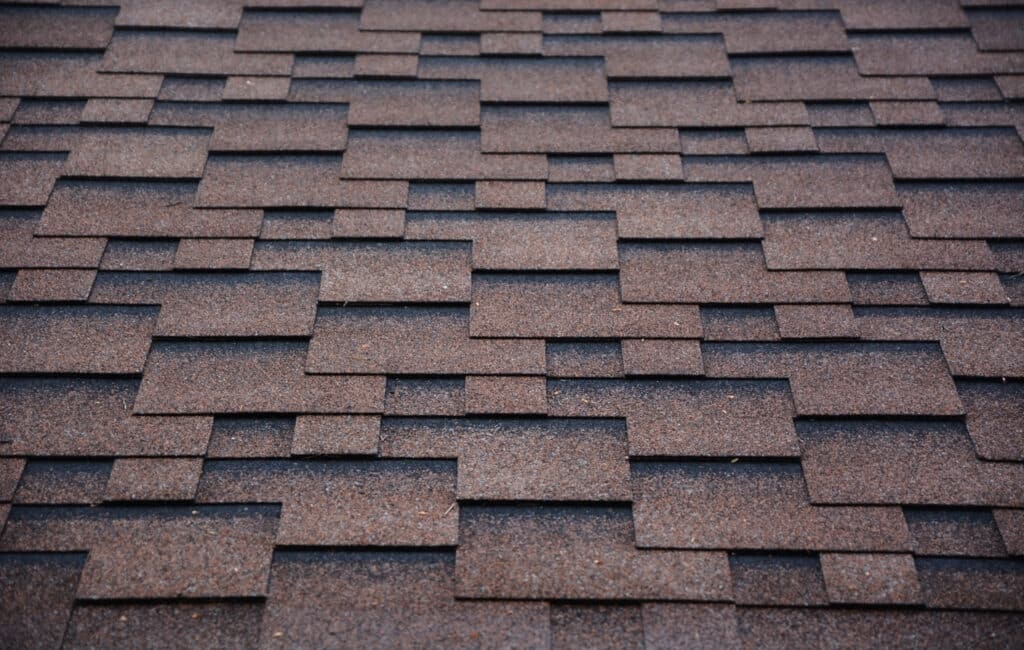
Architectural Shingles
Architectural shingles are going to be more durable and have a more dimensional look to them, making them the more aesthetically pleasing option. They are laminated with an additional asphalt layer, giving them a more dimensional appearance.
| Pros | Cons |
|---|---|
| Enhanced Appearance: Architectural shingles offer a three-dimensional appearance with varied shapes and thicknesses, providing a more upscale and visually appealing look compared to traditional 3-tab shingles. They can mimic the appearance of natural materials like wood or slate, adding depth and texture to your roof. | Higher Cost: Architectural shingles are generally more expensive than traditional 3-tab shingles. The increased materials and manufacturing complexity contribute to the higher price point. However, considering their enhanced aesthetics and durability, many homeowners find it worthwhile to invest in architectural shingles. |
| Durability: These shingles are thicker and more robust than standard 3-tab shingles, making them more resistant to damage from hail, wind, and other severe weather conditions. They typically have a longer lifespan, often ranging from 25 to 40 years or more, depending on the quality and brand. | Heavier Weight: Due to their layered construction, architectural shingles are heavier than standard shingles. This may require additional structural support or reinforcement to ensure your roof can handle the extra weight. Consulting with a professional roofing contractor is crucial to assess the compatibility with your roof structure. |
| Improved Weather Resistance: Architectural shingles are designed to provide better resistance against wind uplift and water infiltration. Their multiple layers and heavier construction make them less susceptible to wind-driven rain, reducing the risk of leaks and water damage. | Longer Installation Time: Installing architectural shingles can take longer compared to standard shingles due to their thicker and heavier nature. This may lead to higher labor costs or longer installation timelines, especially for complex roof designs. |
| Energy Efficiency: Some architectural shingles incorporate reflective granules or coatings that can help reduce heat absorption, keeping your home cooler in hot climates. This can lead to lower energy costs by reducing the strain on your cooling system. | |
| Increased Value: Installing architectural shingles can enhance the curb appeal and overall value of your home. The stylish appearance and durability of these shingles make your property more attractive to potential buyers. |
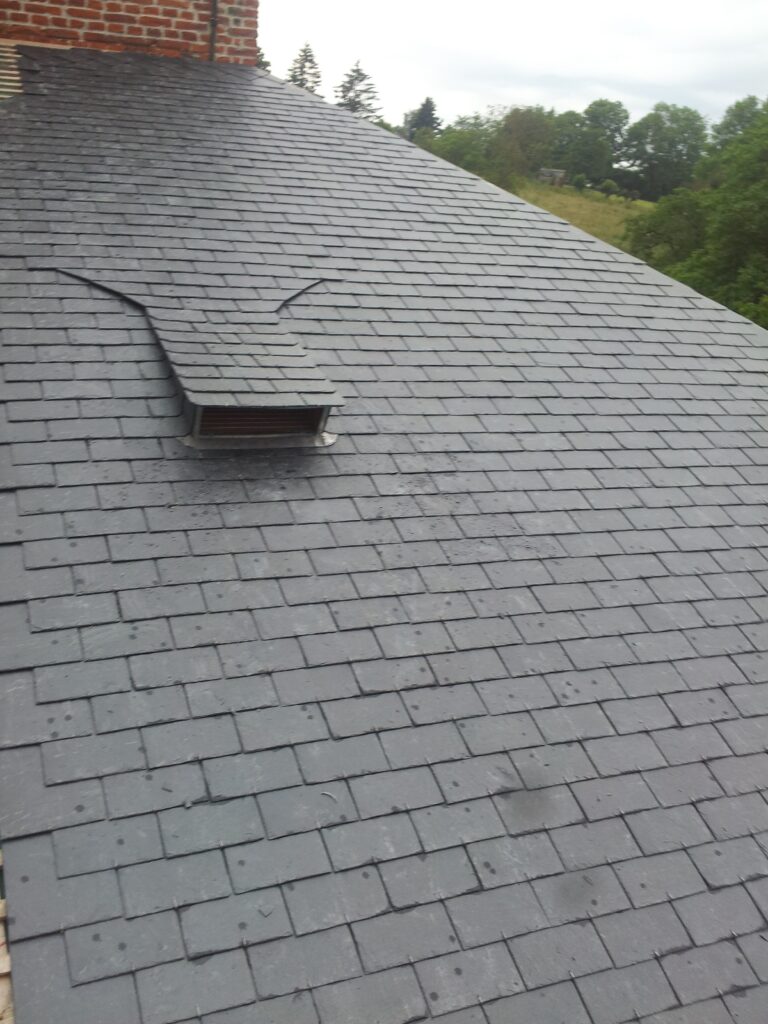
Synthetic Asphalt Shingles
Synthetic asphalt shingles, also known as composite or engineered shingles, are an alternative to traditional asphalt shingles. They are designed to mimic the appearance of natural materials while offering additional benefits. Let’s explore the pros and cons of synthetic asphalt shingles:
| Pros | Cons |
|---|---|
| Durability: Synthetic asphalt shingles are highly durable and resistant to damage from harsh weather conditions, including wind, hail, and UV rays. They have a longer lifespan compared to traditional asphalt shingles, typically ranging from 30 to 50 years or more. | Higher Cost: Synthetic asphalt shingles tend to be more expensive than traditional asphalt shingles. The advanced manufacturing processes and materials used contribute to the higher price point. However, the long-term durability and reduced maintenance costs may offset the initial investment. |
| Versatility in Design: These shingles can replicate the look of various roofing materials, such as wood shakes, slate, or tile, allowing homeowners to achieve the desired aesthetic without the associated maintenance or cost. They come in a wide range of colors, styles, and textures, providing versatility in design choices. | Environmental Impact: While synthetic asphalt shingles offer some environmental advantages over natural materials like wood or slate, they are still made from petroleum-based products. This raises concerns about their carbon footprint and contribution to non-renewable resource consumption. |
| Lightweight: Synthetic asphalt shingles are lighter than some natural roofing materials, making them easier to install and putting less strain on the roof structure. This can be beneficial, especially for older or structurally sensitive buildings. | Limited Long-Term Performance Data: Synthetic asphalt shingles are a relatively new roofing option, and there may be limited long-term data available on their performance and durability compared to traditional materials. However, reputable manufacturers provide warranties and testing to ensure their quality and longevity. |
| Low Maintenance: Unlike natural materials, synthetic asphalt shingles require minimal maintenance. They are resistant to moss, mold, and rot, reducing the need for regular cleaning or treatment. They also do not require periodic refinishing or sealing. | |
| Fire Resistance: Synthetic asphalt shingles are typically fire-resistant or have a high fire rating, providing an additional layer of safety and protection for your home. |
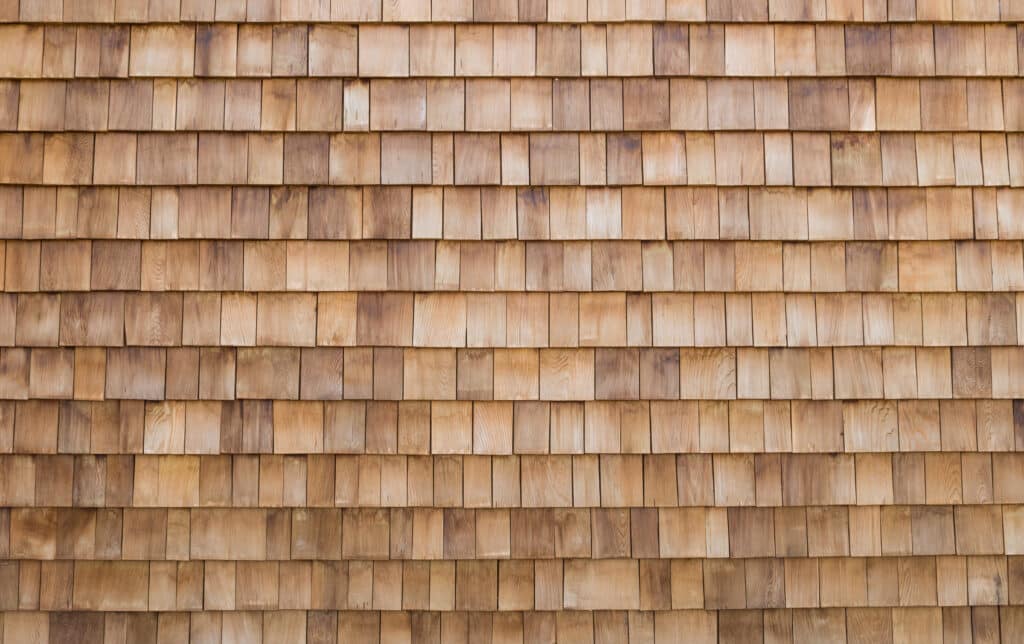
Wooden Shingles or Shakes
Wooden shingles have been around forever and are still fairly popular today. They are generally manufactured using hardwoods or composite wood materials. They tend to last a little bit longer than asphalt shingle roofs, having an average lifespan of around 25- 30 years. The lifespan is highly dependent on the climate the roof is in. Aesthetically they offer a more rustic look.
| Pros | Cons |
|---|---|
| Aesthetic Appeal: Wooden and shake roofs provide a unique and timeless beauty that can enhance the overall appearance of a home. The natural texture, warmth, and variation in color create a distinct and inviting look. | Higher Maintenance: Wooden and shake roofs require regular maintenance to ensure their longevity. This includes periodic cleaning, treatment for moss or algae, and inspections for rot or insect damage. Neglecting maintenance can lead to premature deterioration and expensive repairs. |
| Ease of Repair: In the event of damage, individual shakes or wooden shingles can be easily replaced, making repairs more manageable and cost-effective compared to other roofing materials. | Fire Hazard: Wood is a combustible material, which poses a higher fire risk compared to non-combustible roofing materials. However, fire-resistant treatments and building codes can help mitigate this concern. |
| Longevity: With proper maintenance and care, wooden and shake roofs can have a long lifespan, lasting around 30 years or more. Regular maintenance, such as cleaning and treating for moss or algae, can help prolong their durability. The lifespan is also highly dependent on the climate the roof is in. | Vulnerability to Weather: Wooden and shake roofs can be susceptible to damage from extreme weather conditions such as heavy rain, hail, and wind. Without proper maintenance, exposure to moisture can lead to rot, decay, and insect infestations. |
| Insulation: Wood is a natural insulator, providing better thermal resistance than many other roofing materials. This can contribute to improved energy efficiency and help regulate indoor temperatures. | Cost: Wooden and shake roofs are generally more expensive upfront compared to many other roofing materials. The cost of materials, installation, and regular maintenance should be considered when budgeting for this type of roof. |
| Limited Availability: Finding skilled contractors experienced in installing and maintaining wooden and shake roofs may be more challenging compared to other roofing materials. It’s important to work with professionals who understand the specific requirements of these roofs. |
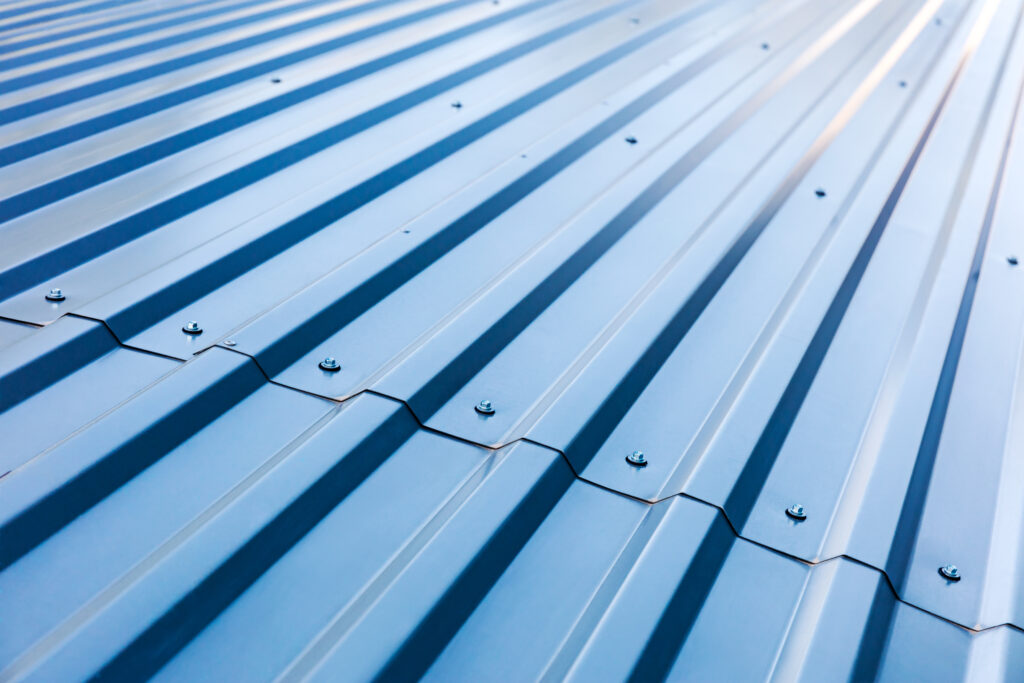
Metal Roofing
Metal roofs can last anywhere from 40-80 years depending on the climate. They don’t offer much in terms of curb appeal, but what they lack in curb appeal they make up for in their long lifespan.
| Pros | Cons |
|---|---|
| Longevity: Metal roofs are known for their exceptional durability and longevity. They can last 50 years or more with proper installation and maintenance, outlasting many other roofing materials. | Initial Cost: The upfront cost of a metal roof is generally higher compared to traditional roofing materials such as asphalt shingles. However, the long-term durability and energy-saving benefits can offset the initial investment. |
| Low Maintenance: Metal roofs require minimal maintenance compared to other roofing options. They are resistant to cracking, warping, rotting, and insect damage. Regular inspections and occasional cleaning are usually sufficient to keep them in good condition. | Noise: Without proper insulation, metal roofs can be noisy during rainstorms or hail events. However, insulation materials and techniques can minimize the noise to a level comparable to other roofing materials. |
| Weather Resistance: Metal roofs offer excellent resistance against various weather elements, including wind, hail, snow, and rain. They are highly durable, preventing water infiltration and reducing the risk of leaks and damage during severe weather events. | Denting: While metal roofs are highly durable, they can be susceptible to denting from hail or falling debris. However, modern metal roofs are often designed to withstand moderate impacts, and the dents usually do not affect the overall functionality or lifespan of the roof. |
| Energy Efficiency: Metal roofs can reflect a significant amount of solar heat, helping to reduce cooling costs during hot summers. They are often coated with reflective finishes that improve energy efficiency, reducing the strain on HVAC systems. | Expansion and Contraction: Metal roofs expand and contract with temperature changes, which can lead to slight movement and noise if not properly installed or fastened. Professional installation techniques and using appropriate materials can mitigate this issue. |
| Fire Resistance: Metal roofs are non-combustible and provide added fire protection to the structure. This can be particularly advantageous in areas prone to wildfires or for homeowners seeking enhanced safety. | Style Limitations: Metal roofs may not suit the architectural style of every home. While they offer a modern and sleek look, they may not complement more traditional or historic designs as well as other roofing materials. |
| Eco-Friendly: Metal roofs are considered environmentally friendly because they are often made from recycled materials and can be fully recycled at the end of their lifespan. They also promote energy efficiency by reducing the need for air conditioning. |
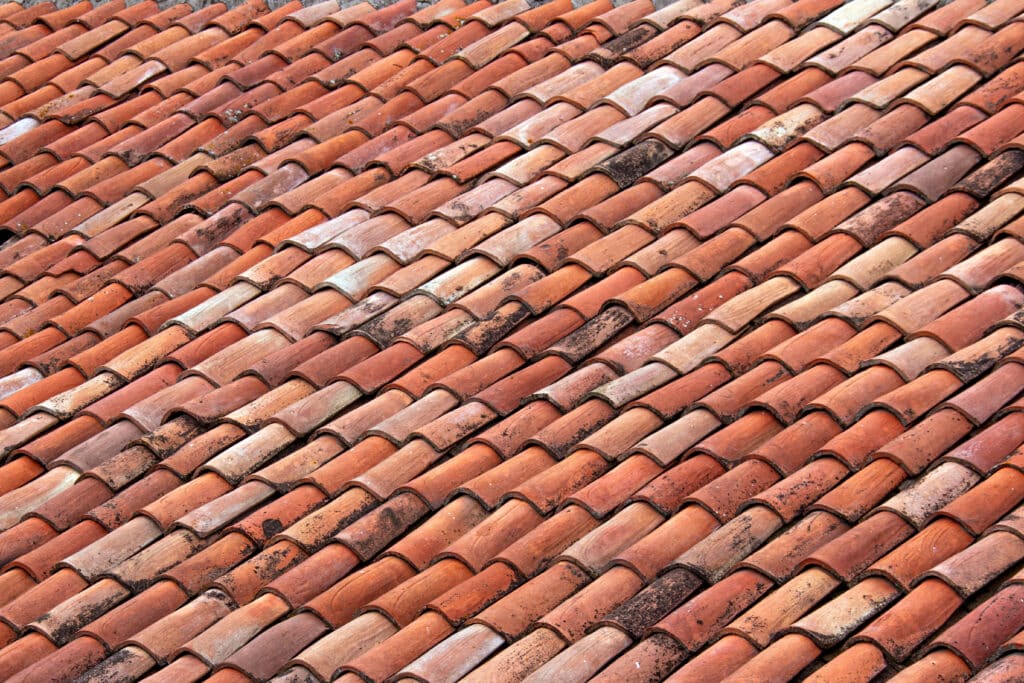
Tile Roofs
Tile roofs are considered to be the most durable roofs. They also offer more aesthetic choices for greater curb appeal than a metal roof may offer.
| Pros | Cons |
|---|---|
| Durability: Tile roofs are highly durable and can last for 50 years or more with proper maintenance. They are resistant to rot, insects, and fire. Some tile materials, such as clay or concrete, can withstand extreme weather conditions, including high winds and hail. | Cost: Tile roofs are generally more expensive to install compared to other roofing materials, such as asphalt shingles. The cost of materials, the weight of the tiles, and the specialized installation process contribute to the higher price point. |
| Aesthetic Appeal: Tile roofs offer a timeless and beautiful look that can enhance the curb appeal of any home. They come in various shapes, styles, and colors, allowing homeowners to choose a design that complements their architectural style. | Weight: Tile roofs are heavy, and some structures may require reinforcement to support the additional load. It’s important to ensure that the roof structure is properly evaluated and can handle the weight of the tiles. |
| Longevity: Compared to other roofing materials, tile roofs have a longer lifespan. They require less frequent replacement, saving homeowners money in the long run. | Fragility: While tile roofs are durable, individual tiles can be fragile and susceptible to cracking or breaking if they are walked on or if heavy objects fall on them. It’s important to exercise caution when accessing the roof and to have spare tiles on hand for replacements. |
| Energy Efficiency: Tile roofs have natural thermal resistance, which helps to reduce heat transfer and maintain a more comfortable indoor temperature. This can lead to energy savings and reduced cooling costs, especially in hot climates. | Complexity of Installation: Installing tile roofs requires specialized knowledge and expertise. The tiles must be properly aligned, secured, and sealed to ensure a watertight and long-lasting roof. It’s crucial to work with experienced contractors who are familiar with the intricacies of tile roof installation. |
| Low Maintenance: Tile roofs require minimal maintenance. They are not prone to rot or decay and do not require frequent cleaning or painting. Periodic inspections for cracked or broken tiles and clearing debris from gutters are usually sufficient to keep them in good condition. | Limited Color and Style Options: While tile roofs offer a range of color and style options, the choices may be more limited compared to other roofing materials. This can make it challenging to find an exact match for specific architectural styles or personal preferences. |
Conclusion
In conclusion, when choosing a roofing style, it’s important to consider factors such as budget, desired aesthetics, durability, maintenance requirements, climate, and structural considerations. Consulting with roofing professionals can provide valuable guidance in making an informed decision that best suits your needs and preferences. If you’re looking for a roof replacement or roof installation in The State of Florida feel free to contact us for a free quote!